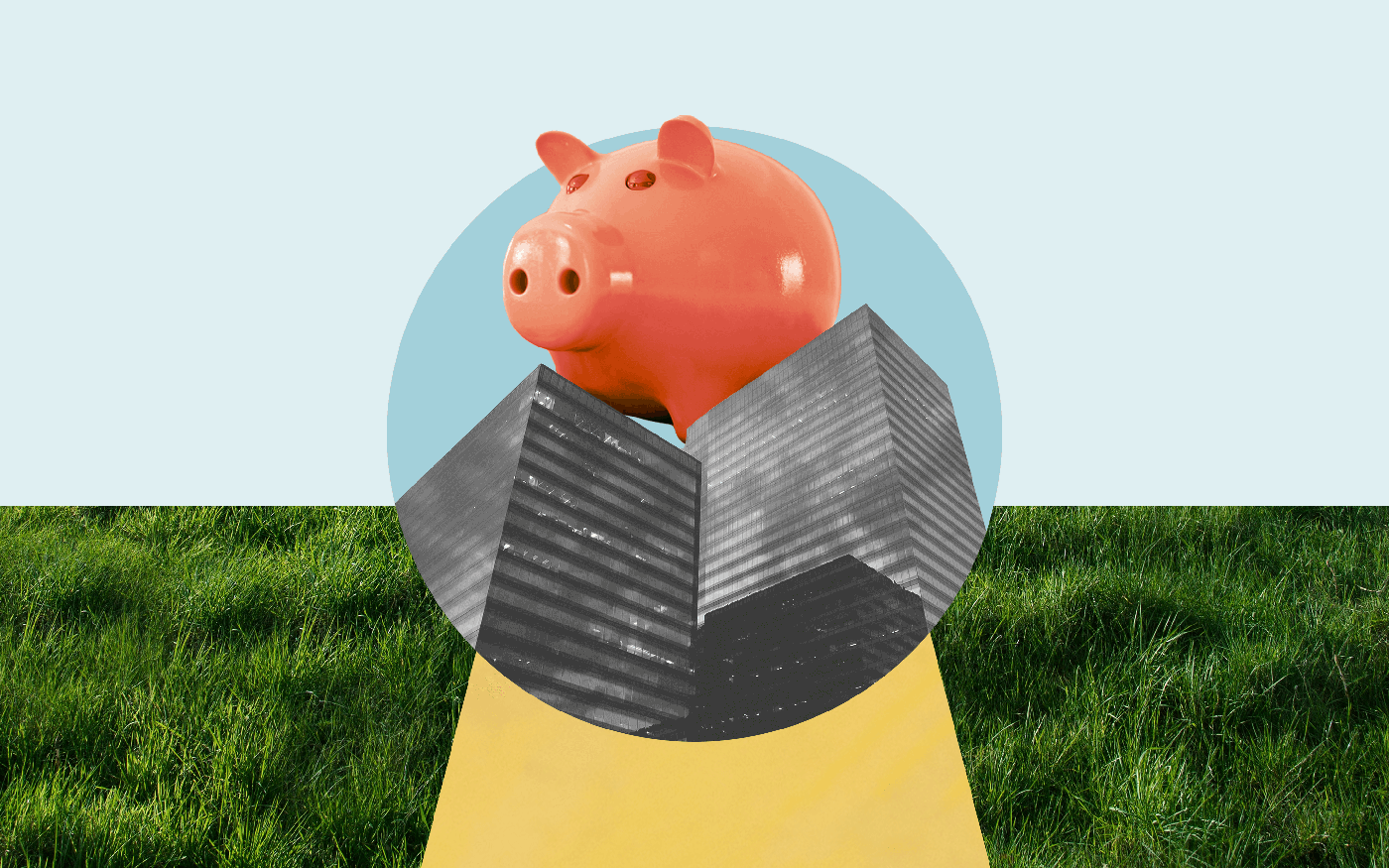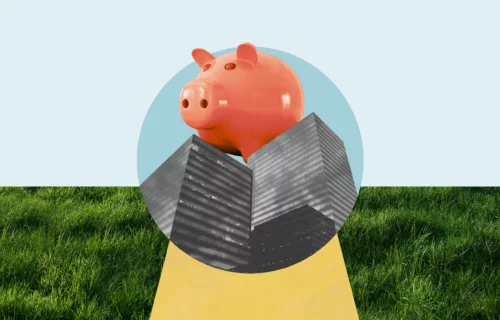ETFs (exchange-traded funds) are generally a cost-efficient and easy way to invest in the stock market. In this article, we will cover what an ETF is, which types of ETF you can invest in, and what you need to be aware of when investing in ETFs.
Here’s what you need to know first:
- An ETF is an investment product that contains a mix of company stocks or other investments. You can buy or sell your ETF investment via the stock market.
- ETF fees are typically cheaper than classic forms of investment. But watch out for hidden costs!
- Most ETFs are usually “passive”, which means the fund manager uses the “buy and hold” approach rather than actively buying and selling investments in an attempt to increase the returns.
- ETFs have benefits and limitations. One big downside is that many sustainable ETFs contain investments in companies like Chevron, McDonald’s and Newcrest Mining (more about this later!).
By the way – a few times a year, Inyova hosts an interactive online event that deep dives into the differences between investing in an ETF and Investing with Inyova. Check out our events page to see what’s coming up.
What is an ETF?
ETFs are very similar to classic funds. The difference is that an ETF is traded on a stock exchange, whereas a fund is usually organised through a bank or directly from a fund provider.
Both ETFs and funds contain a mix of company stocks or other investments, and pool investors’ money together. One of the big drawbacks is that you own shares in the financial product, but you don’t directly own stocks in the underlying companies.
Because you don’t own the stocks directly, you also don’t have the flexibility to include or exclude companies according to your own personal values, and you don’t have any shareholder rights. These extra layers can also expose you to counterparty risk (more about this later in the article).
ETFs generally have three main characteristics:
1. ETFs usually track an index or theme
Many ETFs are based on a theme, such as ‘sustainability’ or ‘short-term futures’, or a market index, such as the S&P500.
2. ETFs are usually passive funds
A passively-managed ETF typically follows a “buy and hold” strategy. That means the ETF provider will buy or sell stocks only to replicate changes in the index it follows. On the other hand, actively managed ETFs are continuously updated by the fund manager in an attempt to maximise performance (not always with success!).
3. ETFs are traded on the stock exchange
You can buy and sell your investment in an ETF in the same way that you buy and sell company stocks. Your ETF can be sold as long as the stock exchange is open and its value goes up and down depending on the supply and demand.
Which ETFs are best to invest in?
As with any investment, ETFs have pros and cons. It’s a good idea to get independent advice before making any major investment decision. This should include a discussion about your investment horizon, risk profile, your goals, and other factors. Don’t blindly go with what the bank clerk recommends – they will often receive a kickback if you sign up to particular funds of ETFs.
Earlier in this article, we mentioned that many ETFs are based on an index. For example, an ETF might track the S&P500, which is an index of the 500 biggest companies in the USA. But that doesn’t necessarily mean that the ETF contains all 500 stocks – this is where physical and synthetic replication come into play. In this section, we explain physical and synthetic ETFs as well as two other types of ETF that you might have heard of.
Physical ETFs
Broadly speaking, there are two types of physical ETFs:
- Full physical replication: where the ETF fully matches the underlying index. For example, the ETF tracks the S&P500, so it contains all 500 company stocks.
- Sampling replication: where the ETF contains a selection of stocks that more or less behave like the underlying index.
Most physical ETFs use the sampling replication approach. If we think about the S&P500 example, the ETF won’t necessarily include stocks from all 500 companies – just a sample picked by the person managing the fund.
Synthetic ETFs
Synthetic ETFs also try to match the performance of an index or another asset. But instead of investing in those assets, synthetic ETFs use complex financial derivatives known as “swaps”. This is where it gets a bit intransparent and complex!
The synthetic approach can save on transaction costs. And when you look at historical performance, synthetic ETFs have been pretty good at matching the returns of whatever it is they are trying to track.
However, proceed with caution! Synthetic ETFs carry added risks. In the USA, the Federal Reserve even issued a statement warning investors that synthetic ETFs are riskier than physical ETFs due to counterparty risk.
Accumulating ETFs
In an accumulating ETF, dividends and profits are reinvested in the fund. This makes it a popular choice for investors who are taking a long-term view, because their investment will benefit from the compound interest effect as it grows. Depending on what country you are based in, there can also be tax benefits to this approach!
Distributing ETFs
In a distributing ETF, the company dividends are paid out to investors rather than being reinvested into the fund. This means that from time to time, the ETF investors get some cash coming back to them. This can be useful for somebody who wants a stream of income to come from their investment – for example, a person who has retired and wants to be able to use the money for their living costs. However, the terms and conditions around this can vary depending on the provider – it’s important to understand the fine print!
Advantages of ETFs
On the surface level, ETFs can seem like an attractive investment option. The fees are cheap, there’s good diversification, and you can start with only a few francs. But are ETFs all they cracked up to be? Let’s explore these benefits in more detail.
1. Low costs
Some ETFs can appear very cheap. And it is true that this can be a cost-effective way to invest. Watch out for hidden fees though – although the total expense ratio (TER) for most ETFs is below 1%, this excludes things like transaction costs and performance fees. On top of the annual cost, you might also pay fees for buying and exiting from the fund. These extra costs can add up quickly!
2. Diversification
By definition, an ETF contains a number of different investments. Although this can help spread your risk, it’s important to remember that having a lot of different investments doesn’t automatically mean your investment is diversified. For example, an ETF that tracks the S&P500 may contain more than 100 different companies… but all of these companies will be from the USA and many of them will be in the technology industry. This can leave you unnecessarily exposed to downturns in these areas.
3. Low minimum investment
ETFs are great for investors who don’t have a lot of money to invest, as the minimum investment is usually very low. We’ve even seen some ETFs with a minimum investment of USD 1!
Limitations of ETFs
All types of investment have limitations to consider. Here are three major drawbacks when it comes to investing in ETFs.
1. Lack of transparency
Earlier, we mentioned that some sustainable ETFs contain investments in oil and mining companies. If you know where to look, you’ll sometimes find these revealed in the fine print. On the other hand, many ETFs keep these details strictly under wraps.
2. Impact investing is not possible
When you invest in an ETF, you don’t have any power to include or exclude certain companies that you don’t want to invest in. In addition, you don’t directly own any company stocks, which means you miss out on your shareholder rights – such as voting on major strategic decisions. Shareholders get other advantages too, for example, Inyova hosts Shareholder Engagement Events where you can meet company leaders, give them feedback, and help shape the future of the company. Companies tend to take shareholder concerns seriously!
3. Hidden costs
We mention this a lot because it’s a common trap. In fact, the Financial Times revealed the cost of investing in several popular ETFs, including BlackRock and Vanguard, can be up to four times higher than the advertising implied. This is such a big problem, we dedicated an entire article to it! Read more about hidden fees here.
Better than ETFs – sustainable investing with Inyova
When you invest with Inyova, you become an impact investor, focusing on the topics that are close to your heart. This could include plant-based food, renewable energy, transport of the future and more. You directly own stocks in companies that are solving the biggest problems of our time.
But how exactly is Inyova different from an ETF? Let’s take a look at four of the biggest differences.
Investing in an ETF vs investing with Inyova
1. Direct ownership
With Inyova, you directly own the stocks in your portfolio. With an ETF, you buy a slice of the fund, not the stocks themselves.
2. Personalisation and control
With Inyova, you can add and remove topics as well as individual companies. An ETF is “one size fits all” – the fund manager decides what you get.
3. Fees
Inyova has a transparent fee with no hidden costs or additional things to pay. An ETF can be very cheap, but beware of hidden fees.
4. Sustainability
With Inyova, your investment has traceable impact – without compromising your returns. Some major sustainable ETFs have a questionable approach to sustainability, which leads to companies like Chevron and Newcrest Mining being included.
Interested in testing Inyova’s investment platform? You can create a free strategy in just a few minutes – there’s no obligation to continue if you decide it’s not right for you. Start your free strategy here.



